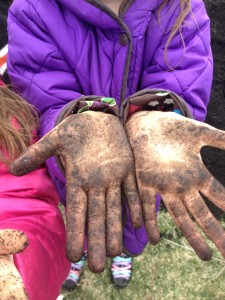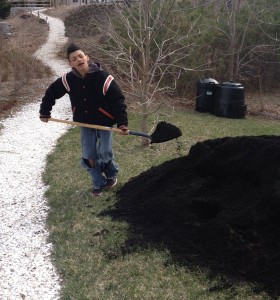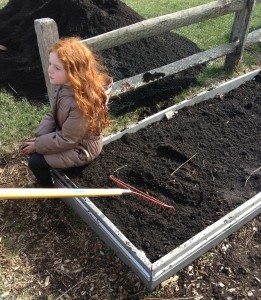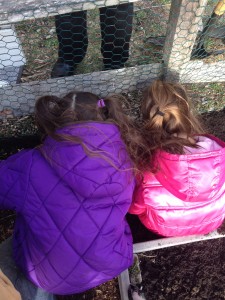I remember staying at my Nana’s all weekend while my parents had their “adult time…” I loved going because she let me climb into her bed to watch Lawrence Welk with a Seven-up ice-cream float. The show was pretty boring but to sip ice-cream from a straw in bed was divine.
The thing is, she didn’t have a treasure trove of toys. In fact she had none. So during the day I ambled around finding inventive ways to entertain myself. While Nana did not run off to a Toys-R-Us and ply me with toys, she did equip me with tools to create my own imaginary world of fun. My favorite was making pies. In the dirt, making mud batters and filling saved pie tins.
 Children love to have permission to get dirty. Gardening provides ample sanctioned opportunities to do this. In our cleanliness obsessed, health conscious world, the chance for kids to need a serious scrub are few and far between.
Children love to have permission to get dirty. Gardening provides ample sanctioned opportunities to do this. In our cleanliness obsessed, health conscious world, the chance for kids to need a serious scrub are few and far between.
I find it interesting that children raised on farms have a much lower rate of food allergies as compared to non-farm raised children. Playing in the dirt may have more benefits than simple joy.
While the Truro students enjoy spring break, our attention shifts to the Truro Children’s Community Garden, located at the Truro Public Library. This is a collaborative effort between the Truro Recreation Program, Library and Sustainable Cape.
As we began at the school garden, learning about and creating healthy soil, the three raised beds at the Children’s Garden needed amending. As Drake, the expert farmer for the Community Garden, explained to the children, “The soil has been sleeping all winter and is hungry.”
So we fed the garden. Tapping a local excavation and landscape contractor,* we had two yards of compost donated and delivered. The children guessed what the dark coffee colored substance was made of (composted leaves) and learned that this is a favorite food for worms. The nascent gardeners already knew that worms are the best ingredient for the soil.
Then the work of prepping the beds for a season of growing began!
- Compost (Check local nurseries and landscapers to see if you can receive a discount or donation)
- Shovels (shorter size works best for younger children)
- Small garden forks
- Garden rakes
Directions:
- Organize a system for scooping dirt and delivering to the beds. We formed a line and followed a path in one direction that looped back to the compost pile, so the kids wouldn’t bump into each other.
- After small piles of compost cover the beds, rake the compost into the top layer of soil. Children shared large rakes and smaller forks, in some cases taking turns with both. Include close adult supervision!
Benefits:
- Children learn about the composition of healthy soil
- Children learn how to work the compost into the soil for maximum benefit
- Working the soil was a rich tactile experience (alerting stimulation for the brain)
- Shoveling was heavy proprioceptive work (organizing stimulation for the brain)
- Raking requires coordinated use of both hands (bilateral motor coordination)
- Both shoveling and raking are body building activities
A special thanks to *Greg Morris and GFM Enterprises for donating compost to the Truro Community Children’s Garden!
This post reflects the partnership and creative collaboration between The Motor Story, Sustainable CAPE, Truro Public Library and Truro Recreation.

